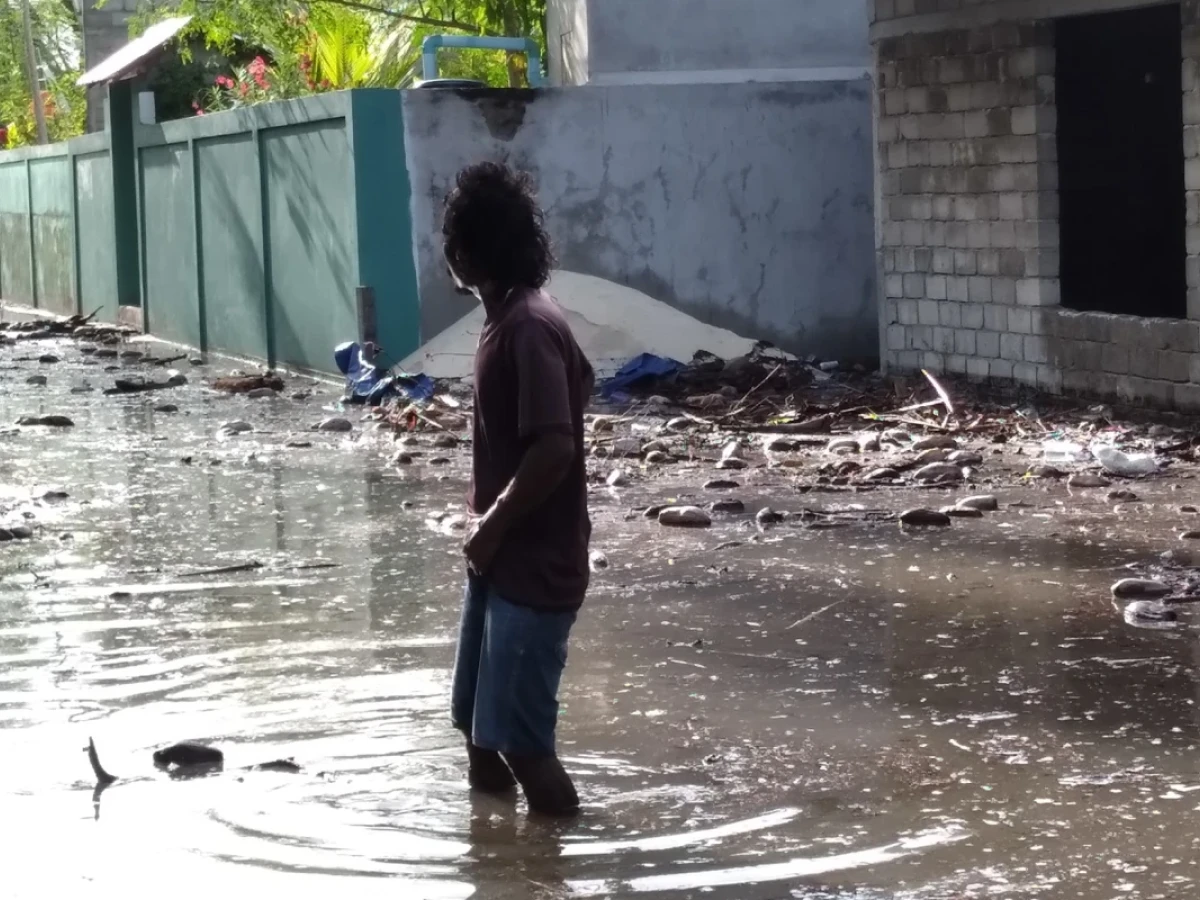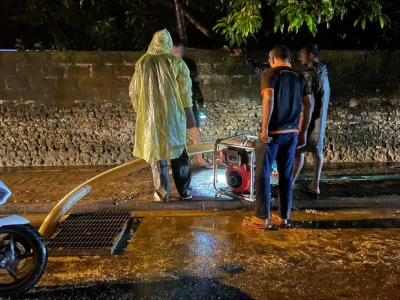
Warning on sea swells, floods in high tide
The MET office said flooding is expected in the north, central and southern atolls during high tides.
By
Aminath Shifleen
Maldives Meteorological Service (MET) issued a public warning on Sunday to be vigilant during the next 24 hours for sea swells and tidal surges.
After the western monsoon’s perpetual rainfall lightened on Friday, several islands have been experiencing sea swells and tidal surges. Male and its satellite town of Hulhumale was hit by waves on Saturday, flooding the breakwater area, near the carnival and artificial beach.
Police have also asked bridge commuters to be vigilant as rocks and sand are washing up onto the bridge near the airport traffic light at the junction of the Sinamale Bridge and the highway.
The MET office said flooding is expected in the north, central and southern atolls during high tides. High tides are forecast at:
-
Northern atolls, 4:09 pm
-
Central atolls, 4:55 pm
-
Southern atolls, 6:01 pm
"This is just the usual western monsoon, but the wave height, direction and interval periods are now rising," a MET official said.
No major damage has been reported so far in the current rains. However, videos posted on social media showed some islands, including resorts, being hit by huge waves.
The high tides are usually caused by cyclones in the South Indian Ocean. Although floods used to occur at certain times in the past, they now can occur at any time.
There are many reasons why tidal surges occur and cause flooding.
Assistant Meteorologist Hussain Waheed told Atoll Times earlier that the flooding in 2022 were caused by tidal surges and sea level rise. Such sea swells are different from the tidal surges that are caused by strong winds.
During bad weather, waves swell naturally. Therefore, the western monsoon have always caused high tide and some amount of flooding in the local islands in the past. Now the difference is that there is a possibility of flooding every day and the damages caused are worse too.
It is the responsibility of the MET Office to monitor the sea levels. Hussain said the office checks the wave height and the time between one wave and another every day. However, many islands in Maldives last year received more floods than the MET office's forecast.
According to Hussain, this pattern of high tide is also due to strong westerly winds and rough seas.




